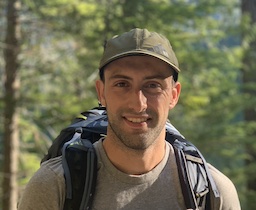Jonah Casebeer
Adobe Research
San Francisco

About Me
I am a research scientist in the Music AI group at Adobe Research. My research focuses on exploiting
natural structure in data and algorithms to achieve efficiency across multiple axes: computational
cost, data requirements, user effort, and downstream model performance. I especially enjoy applications
in audio. I received my Ph.D. in Computer
Science and B.S. in Statistics and Computer Science from the University of Illinois Urbana-Champaign,
where I was advised by Prof. Paris Smaragdis.
Prospective Interns
I am enthusiastic about collaborating with students through research internships at Adobe Research in San
Francisco. The internship program spans 3-4 months during the summer. If you are passionate about
applying machine learning, deep learning, or signal processing to audio, I encourage you to get in
touch. Please send me your CV along with a brief explanation of your research interests. My Adobe page
is here.
Publications
2025
DRAGON: Distributional Rewards Optimize Diffusion Generative Models
Bai, Yatong and Casebeer, Jonah and Sojoudi, Somayeh and Bryan, Nicholas J
Transactions on Machine Learning Research (TMLR)
Re-Bottleneck: Latent Re-Structuring for Neural Audio Autoencoders
Bralios, Dimitrios and Casebeer, Jonah and Smaragdis, Paris
IEEE International Workshop on Machine Learning for Signal Processing (MLSP)
Best Paper Award
Learning to Upsample and Upmix Audio in the Latent Domain
Bralios, Dimitrios and Smaragdis, Paris and Casebeer, Jonah
IEEE Workshop on Applications of Signal Processing to Audio and Acoustics (WASPAA)
Presto! Distilling Steps and Layers for Accelerating Music Generation
Novack, Zachary and Zhu, Ge and Casebeer, Jonah and McAuley, Julian and
Berg-Kirkpatrick, Taylor and Bryan, Nicholas J
International Conference of Learning Representations (ICLR)
REGEN: Learning Compact Video Embedding with (Re-) Generative Decoder
Zhang, Yitian and Mai, Long and Mahapatra, Aniruddha and Bourgin, David and Hong, Yicong and
Casebeer, Jonah and Liu, Feng and Fu, Yun
International Conference on Computer Vision (ICCV)
2024
Scaling Up Adaptive Filter Optimizers
Casebeer, Jonah and Bryan, Nicholas J and Smaragdis, Paris
Preprint
Meta-AF Echo Cancellation for Improved Keyword Spotting
Casebeer, Jonah and Wu, Junkai and Smaragdis, Paris
IEEE International Conference on Acoustics, Speech and Signal Processing (ICASSP)
2023
Meta-Learning for Adaptive Filtering — Ph.D. Thesis
Casebeer, Jonah
Ph.D. Thesis, University of Illinois at Urbana-Champaign
Meta-AF: Meta-Learning for Adaptive Filters
Casebeer, Jonah and Bryan, Nicholas J. and Smaragdis, Paris
IEEE/ACM Transactions on Audio, Speech, and Language Processing
2022
Meta-Learning for Adaptive Filters with Higher-Order Frequency Dependencies
Wu, Junkai and Casebeer, Jonah and Bryan, Nicholas J. and Smaragdis, Paris
IEEE International Workshop on Acoustic Signal Enhancement (IWAENC)
NICE-Beam: Neural Integrated Covariance Estimators for Time-Varying Beamformers
Casebeer, Jonah and Donley, Jacob and Wong, Daniel and Xu, Buye and Kumar,
Anurag
Preprint
2021
Auto-DSP: Learning to Optimize Acoustic Echo Cancellers
Casebeer, Jonah and Bryan, Nicholas J and Smaragdis, Paris
IEEE Workshop on Applications of Signal Processing to Audio and Acoustics (WASPAA)
Sound Event Detection with Adaptive Frequency Selection
Wang, Zhepei and Casebeer, Jonah and Clemmitt, Adam and Tzinis, Efthymios and
Smaragdis, Paris
IEEE Workshop on Applications of Signal Processing to Audio and Acoustics (WASPAA)
Separate but Together: Unsupervised Federated Learning for Speech Enhancement from Non-IID Data
Tzinis, Efthymios and Casebeer, Jonah and Wang, Zhepei and Smaragdis, Paris
IEEE Workshop on Applications of Signal Processing to Audio and Acoustics (WASPAA)
Enhancing Into the Codec: Noise Robust Speech Coding with Vector-Quantized Autoencoders
Casebeer, Jonah and Vale, Vinjai and Isik, Umut and Valin, Jean-Marc and Giri,
Ritwik and Krishnaswamy, Arvindh
IEEE International Conference on Acoustics, Speech and Signal Processing (ICASSP)
2020
Communication-Cost Aware Microphone Selection for Neural Speech Enhancement with Ad-Hoc Microphone
Arrays
Casebeer, Jonah and Kaikaus, Jamshed and Smaragdis, Paris
IEEE International Conference on Acoustics, Speech and Signal Processing (ICASSP)
Efficient Trainable Front-Ends for Neural Speech Enhancement
Casebeer, Jonah and Isik, Umut and Venkataramani, Shrikant and Krishnaswamy,
Arvindh
IEEE International Conference on Acoustics, Speech and Signal Processing (ICASSP)
2019
Deep Tensor Factorization for Spatially-Aware Scene Decomposition
Casebeer, Jonah and Colomb, Michael and Smaragdis, Paris
IEEE Workshop on Applications of Signal Processing to Audio and Acoustics (WASPAA)
Dimensional Analysis of Laughter in Female Conversational Speech
Pietrowicz, Mary and Agurto, Carla and Casebeer, Jonah and Hasegawa-Johnson,
Mark
and Karahalios, Karrie and Cecchi, Guillermo
IEEE International Conference on Acoustics, Speech and Signal Processing (ICASSP)
Multipath-Enabled Private Audio with Noise
Chaman, Anadi and Liu, Yu-Jeh and Casebeer, Jonah and Dokmanić, Ivan
IEEE International Conference on Acoustics, Speech and Signal Processing (ICASSP)
Multi-View Networks For Multi-Channel Audio Classification
Casebeer, Jonah and Wang, Zhepei and Smaragdis, Paris
IEEE International Conference on Acoustics, Speech and Signal Processing (ICASSP)
2018
Cocktails, but No Party: Multipath-Enabled Private Audio
Liu, Yu-Jeh and Casebeer, Jonah and Dokmanić, Ivan
IEEE International Workshop on Acoustic Signal Enhancement (IWAENC)
Verbal Protest Recognition in Children with Autism
Casebeer, Jonah and Sarker, Hillol and Dhuliawala, Murtaza and Fay, Nicholas and
Pietrowicz, Mary and
Das, Amar
IEEE International Conference on Acoustics, Speech and Signal Processing (ICASSP)
Multi-View Networks for Denoising of Arbitrary Numbers of Channels
Casebeer, Jonah and Luc, Brian and Smaragdis, Paris
IEEE International Workshop on Acoustic Signal Enhancement (IWAENC)
End-to-End Source Separation with Adaptive Front-Ends
Venkataramani, Shrikant and Casebeer, Jonah and Smaragdis, Paris
Asilomar Conference on Signals, Systems and Computers
2017
Adaptive Front-Ends for End-to-End Source Separation
Venkataramani, Shrikant and Casebeer, Jonah and Smaragdis, Paris
NeurIPS ML4Audio Workshop
